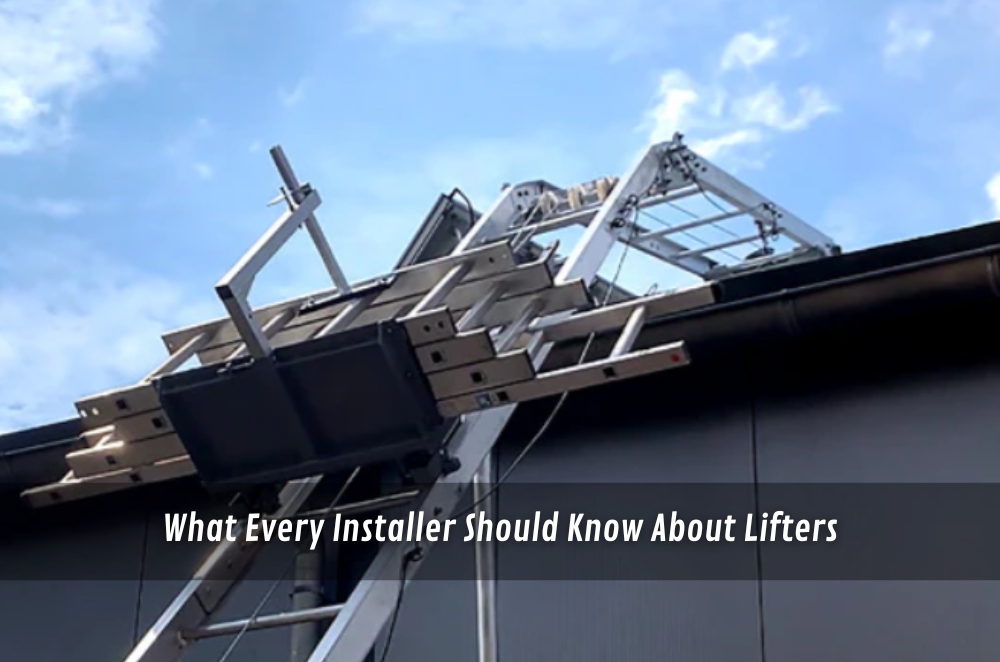Rooftop installs test your patience as much as your balance. If you’ve ever tried carrying a glass module up a ladder, you’ll know how quickly a routine lift can turn into a risky scramble. Crews have always improvised—ropes, shoulder carries, even two-person heaves—but those methods push bodies past their limits. That’s why the solar panel lifter has become more than just a tool; it’s a way to make work steady instead of chaotic. On one townhouse job in Newcastle, we moved from hand-hauling panels to guiding them up with a lifter. The mood shifted instantly—less strain in the shoulders, fewer shouted warnings, and more focus on getting rails square.
Why lifters matter more than you think
A lifter does more than move panels. It reshapes the entire rhythm of a job. Instead of wrestling with awkward loads, installers can focus on alignment, fixings and weather gaps. That means fewer pauses, fewer “careful mate” calls, and more headspace for the details that actually determine a clean finish and long-term performance.
- Reduces manual handling strain on backs, shoulders and grip.
- Keeps panels level and protected from edge knocks and flex.
- Frees at least one installer to spot, guide and plan the set-down.
- Encourages consistent workflows across multi-storey sites.
I’ve seen teams burn out by lunchtime when they’re lifting by hand. Grip fatigue creeps in. Footwork gets sloppy. Tempers shorten. With a lifter, the team still feels fresh mid-afternoon. That matters when the last string is being run and everyone’s tempted to rush. The less your body is fighting the load, the more your brain stays available for safe judgment calls.
Practical safety principles on real rooftops
Even with the right gear, risk lives in the small moments—transitioning from ladder to roof, shifting stance on a hot metal deck, or handling panels in gusty conditions. The trick isn’t to banish risk; it’s to set the site up so risk stays predictable and manageable.
- Assign clear roles: one operator, one spotter, one receiver.
- Stage panels on firm ground with pads; keep lanes uncluttered.
- Use tag lines to steady panels in crosswinds.
- Keep spoken cues short and standardised—“Up,” “Hold,” “Down.”
On a tight terrace job in Wollongong, we marked a “no step” zone near the gutter, chalked a landing mark on the roof sheet, and rehearsed the callouts before the first lift. That five-minute run-through paid for itself all day. No heroics, no last-second lunges, just boringly consistent moves—which is exactly what you want on the edge of a roof.
Australia’s shift to rooftop work
Within that landscape, it helps to step back and look at the bigger picture. Rooftop work isn’t happening in isolation; it’s part of a national movement that keeps accelerating year after year. Households and businesses alike are adding panels to cut reliance on the grid and strengthen local resilience. When you consider the scale of solar energy in Australia, it becomes obvious why safe lifting practices matter so much. Thousands of small installs, scattered across suburbs and regions, create countless moments where panels are shifted by hand. The more often that happens, the greater the need for lifters who make those movements controlled and predictable. In other words, safety isn’t just a site-by-site choice—it’s baked into the way Australia builds out its renewable future.
Preventing strains before they start
Injuries on site rarely come from one big mistake. More often, they build up from small habits—lifting awkwardly, rushing when tired, or skipping a spotter because the team is short on time. Crews that avoid those patterns usually have a culture of simple routines: lifting in pairs when needed, keeping work zones clear, and pacing the day so fatigue doesn’t take over.
That’s where everyday workplace safety practices make their mark. They aren’t dramatic changes; they’re small, steady habits that keep jobs predictable and crews confident. When those practices are second nature, panels go up smoother, tempers stay level, and everyone finishes the day in one piece.
Selecting and using the right lifter
Once the team commits to mechanical assist, the next question is suitability. Height, reach, power availability, and roof pitch drive the choice. Think about the whole path: ground staging, lift line, roof landing, and final shuffle into place. A well-matched lifter removes friction across that path rather than solving only one pinch point.
- Confirm capacity and duty cycle with realistic site loads.
- Check ladder angle, tie-offs and secure footing before the first lift.
- Plan a predictable landing pad and a “bump stop” to avoid gutter strikes.
- Test one lift with a sacrificial sheet or empty frame to verify the line.
That’s why discussions about solar panel installation safety keep coming back to the same point: equipment supports the process, but people set the tone. A calm site, clear communication, and predictable moves make the lifter more than a machine—they make it part of a reliable routine. And when the routine holds, panels go up without drama, and crews stay sharp until the last rail is fixed.
Final thoughts
Great solar work isn’t loud. It looks methodical, almost ordinary. Panels arrive at height without drama, land square, and slot into place with minimal handling. That’s not luck; it’s a product of roles, rehearsal, and the right lifting aid for the site. Keep the lifts predictable, the cues short, and the culture firm on stopping when something feels off. Do that, and installs remain calm from the first module to the last cable tie—exactly how rooftop days should run.





Comments